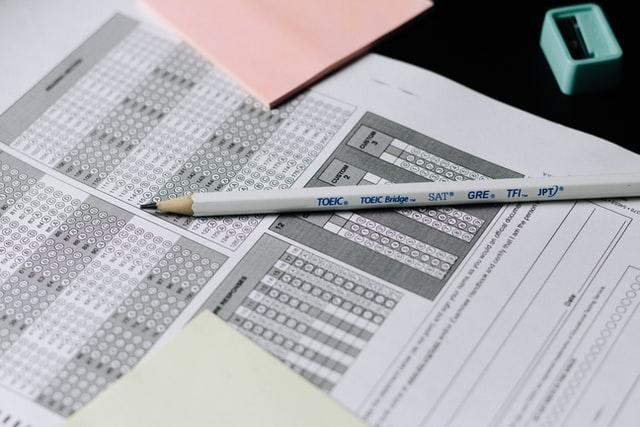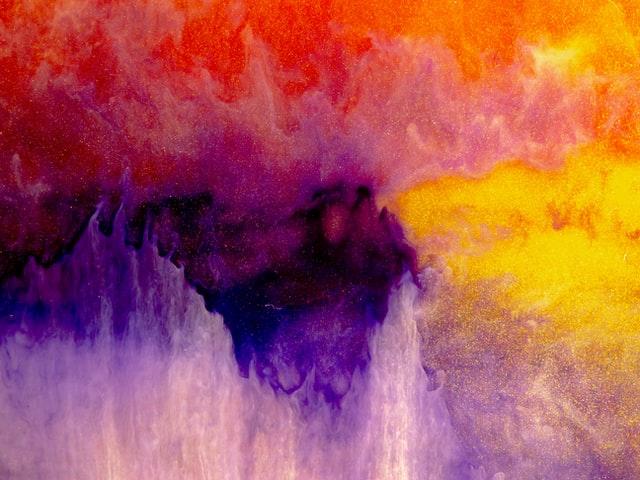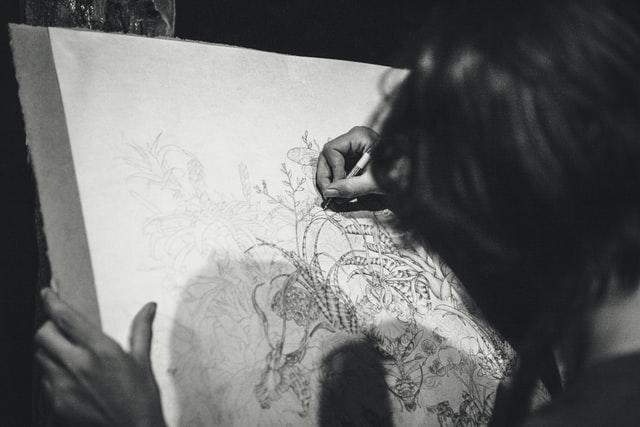At different stages of our lives, we are often faced with many challenges that could potentially make or break us.
Whether it is the process of pursuing our lifelong dream or learning something new from scratch, there's likely a time when we could feel lost or dejected. It could be due to a sudden loss of interest or lack of motivation or unexpected circumstances that come our way.
That's why apart from passion, purpose is something that we should figure out before we decide to do something.
What drives you to study art at a young age?
What do you plan to do with your skillset as an aspiring artist?
This mindset is important for an SPM student who has registered for the SPM Pendidikan Seni Visual subject. Without a doubt, it is great to get that "A" at the end of your studies (We'll talk about how to do that later).
But before that, you should dive deep into the significance of learning visual art at this level. Once you have a clear direction of why you are doing this, it will help you take feasible actions to achieve your desired results.
That's why in this article, we will be looking at the learning objectives and general marking scheme for Paper 1, Paper 2 and Paper 3 of your SPM Pendidikan Seni Visual subject.

What Are The Learning Objectives That Every Student Must Achieve Under The SPM Pendidikan Seni Visual Syllabus?
All Pendidikan Seni Visual teachers will plan their lessons and evaluations according to these four learning objectives that have been set by the Ministry of Education under the latest KSSM syllabus for this subject.
As you are taking this subject, you can also refer to these to see whether you are on the right track.
1. Persepsi Seni [Art Perception]
Students are required to form a basic and sound foundation on the 5 visual art themes of the syllabus:
- Sejarah dan Apresiasi Seni Visual
- Seni Halus
- Reka Bentuk
- Seni Kraf
- Komunikasi Visual
2. Explorasi Seni [Art Exploration]
Students are then taught to explore and directly apply what they have learnt in these 5 visual art themes through the usage of various mediums, techniques and processes.
3. Ekspresi Seni [Art Expression]
Students will then master the skill to generate new ideas and concepts through the utilization of mediums, techniques, and processes from various sources and technology when they are given a new art assignment.
4. Apresiasi Seni [Art Appreciation]
Students will learn to describe and share a good piece of work using the right jargon to detail their choice of (colours, lines, values, symbolism, shadows etc) based on what they have learnt from the Pendidikan Seni Visual syllabus.
You surely didn't see this coming, right? This goes to prove that the emphasis of art education in Malaysia is more than just passing examinations, but it is also a matter of cultivating the right attitude which leads to reflective actions.
Continue reading further to have a comprehensive review of the examination format for your SPM Pendidikan Seni Visual papers.
What Are Some Tips To Score For The Objective Questions For SPM Pendidikan Seni Visual?
It's safe to assume that most students do not feel as much stress when they are attempting Paper 1 of this subject as compared to Paper 2.
After all, all you need to do is just answer 40 multiple-choice questions within one hour.
That's why we're here to give you some important tips to ace the questions because you can get a full score for this paper with the right studying and answering techniques.

Photo by Nguyen Dang Hoang Nhu on Unsplash
Here are 3 tips to follow:
Tip 1: Look up the important terms in the Glossary section of your Form 4 and Form 5 textbooks
Around 50% of your SPM Pendidikan Seni Visual Paper 1 questions centre around definitions, characteristics and functions. You'll be able to remember them better when you list the important terms (techniques, process) according to the Form 4 and Form 5 topics. You can use flashcards or mind maps to memorize them.
Tip 2: Familiarize yourself with various images and illustrations
I mean, this is a visual art subject. Be prepared to identify the differences in various drawing techniques, patterns and even pictures of famous artists across the globe. When it comes to drawing or painting equipment, do pay attention to their features and their respective functions.
Tip 3: Master the elimination strategy for pairing options
It is not a classic Paper 1 exam if there are no I, II, III and IV pairing options questions. When the answers seem so close, the first thing to do is to eliminate the option that you are 100% sure is wrong. From there, you will be left with two options. Take your time to look for the answer that matches the question, illustration or given keywords.
With these 3 tips, we can guarantee that you're not far away from a 40 over 40 full score.

What Are The Criteria That Examiners Will Look At When They Are Grading The SPM Pendidikan Seni Visual Paper 2?
Next, let's take a look at Paper 2.
One advantage that the SPM Pendidikan Seni Visual Paper 2 has over Paper 1 is that you will be given the drawing topics one week before the actual exam. This means you will have one week to review and prepare and practice as much as you can.
On the examination day, you are given 3 hours to complete your drawing (1 question) and the total mark allocation is 50 marks.
Your final submission will be evaluated based on these 4 components and their sub-elements:
Gubahan (Composition)- 15 marks
- The final drawing must show a clear usage of space in terms of perspective, shape and overall balance of the subjects.
- The final drawing should reflect a strategic point of view (angle of focus).
- The final drawing must demonstrate the basic application of art design.
Warna (Colour) - 15 marks
- The colour combination that is chosen for the final work must reflect an appropriate mood and effect for the overall ambience (space, lines, tones, shapes).

Photo by Dan-Cristian Pădureț on Unsplash
Intrepretasi (Interpretation) - 10 marks
- The final work fulfils the requirements of the questions (example: at least inclusion of 3 animals, humans, other objects etc).
- The final work shows a clear connection and coherence of ideas in terms of arrangement and presentation.
Kreativiti (Creativity) - 10 marks
- Application of the right medium and drawing techniques (wet and dry).
- The final work is neat and reflects personal style and originality.
Do take note that this serves as a rough guideline for the marking scheme as every year these grading elements will change slightly according to the given different topics.
Discover what it takes to score a high grade for your SPM Pendidikan Seni Visual Paper 2.
How Will You Be Graded For Your Paper 3 of SPM Pendidikan Seni Visual?
For your school-based assessment project (Paper 3), you will be graded based on these 5 criteria:
- Pewujudan Idea (Establishment of idea) - 10 marks
- Pengolahan Idea (Elaboration of idea) - 35 marks
- Penerokaan Idea (Exploration of idea) - 25 marks
- Penghasilan Karya atau Produk (Creation of work or product) - 25 marks
- Nilai dan Apresiasi (Values and art appreciation) - 5 marks
The total mark for this paper is 100 marks and your project will be completely guided and graded by your subject teacher.
At this stage, you are slowly taking the first step to being equipped to ace your SPM Pendidikan Seni Visual papers.
Why You Should Diversify The Studying Methods For The SPM Pendidikan Seni Visual Subject?
Apart from your regular lessons in school and also doing your notes for revision, private tutoring is also one way to make your studying more interactive and effective, especially when it comes to this subject.
Art education can be pretty subjective because it is multi-facet and everyone may have different interpretations and understanding when it comes to drawing techniques.
In a subject which requires you to constantly improve your skills and unleash your inner creativity, it would be amazing to learn from someone who offers a diverse and refreshing perspective.
You can find many passionate and professional drawing tutors at Superprof! Some of them are graphic designers, freelance painters, and art teachers who are well versed with the SPM Pendidikan Seni Visual syllabus.

Photo by Goashape on Unsplash
Here's what you can experience when you hire a Superprof drawing tutor.
- Master different drawing techniques for different types of arts
- A flexible learning journey
- Extra studying materials
- Examination preparation tips for all 3 papers
- Exploration of different teaching methodologies (online/face-to-face/ more practical exercises)
- Affordable personalised guidance (You decide the maximum budget of the lesson's hourly rate)
All you need to do is just head to the Superprof Malaysia homepage and start browsing for drawing tutors near you. You will then be directed to a selection of tutor profiles that fulfil your requirements.
You can learn more about your potential tutor's industrial experience, qualification, teaching methodology and also their previous students' reviews (if any).
Once you are satisfied, you can proceed to contact the tutor by subscribing to the Superprof Student Pass at only RM25 and then further discuss the details of your first and upcoming lessons. It's super convenient!
Find out what are the best learning resources for your SPM Pendidikan Seni Visual studies.
Art education is critical for helping students develop creativity, critical thinking and problem-solving abilities. -Meagan Chernin
We hope that you have gained more insights on how to score well for all three papers on the SPM Pendidikan Seni Visual subject. All the best in getting that A+!















